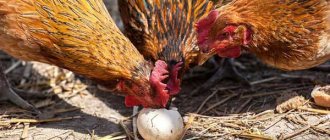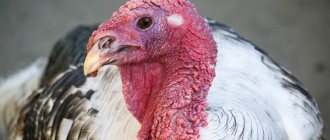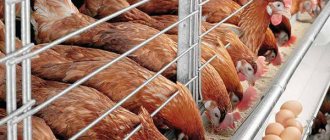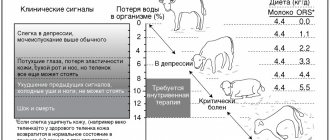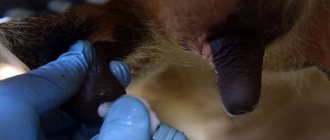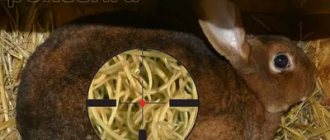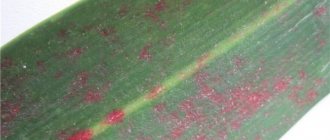944
no comments yet
0
Author of the article
Sadchikov Nikolay Alekseevich
Reading time: 1 minute
Swollen and puffy eyes in chickens can be signs of dangerous infections. These diseases spread easily and quickly between birds, and the symptoms of one chicken can mean the start of an epidemic for the entire chicken coop.
Conjunctivitis in poultry
The most common and well-known disease for breeders, the most common in chickens, is conjunctivitis. Since photographs of chickens with this disease can be found on almost every box of eye drops, everyone also knows what it usually looks like. If the breeder does not pay attention to injuries or bruises, conjunctivitis in the bird may develop as a result of them - and the causes of the disease usually include:
- Lack of adequate ventilation in the coop.
- Lack of vitamin A in poultry nutrition.
- High humidity.
Whatever the cause of the disease, its symptoms are always the same. The chicken raises her eyelids with great difficulty, her eyes begin to swell, and purulent discharge appears. In addition to these signs, there is general fatigue, lack of any appetite and deterioration of vision itself, as a consequence. If this disease is not treated, it will lead to complete blindness of the bird - the chicken’s eyes will atrophy.
To prevent the spread of the disease, sick chickens need to be transplanted into another cage. Veterinary pharmacies have a huge assortment of drugs aimed at getting rid of this disease, but before purchasing them you should definitely consult with experienced specialists. The doctor will prescribe the necessary medications and a treatment plan, depending on the condition of the chicken and the course of its disease.
If you find a tumor on a chicken’s eye or signs of conjunctivitis at the initial stage of the disease, then it is often enough to simply make a tea compress for the chicken’s eyes. To do this, you need to moisten a small piece of cotton wool in well-brewed tea and apply it to the affected eye. Instead of tea, you can use chamomile infusion.
How to treat swollen eyes in chickens? In parallel with compresses for treating birds, you need to provide them with vitamin A. The easiest way to do this is to simply buy it in the form of drops and add it to their drink. Usually the vitamin is added at the rate of 0.5 ml per 100 ml of water. In addition to vitamin A itself, chickens can be supplemented with other vitamins to improve overall health. This will have a positive effect on the health of the birds and increase their immunity. To prevent the disease, it is worth providing acceptable living conditions - high-quality food, absence of drafts or, conversely, lack of air in the room. If medications and proper care do not help, you should consult a specialist.
Hemophilosis
But if the above diseases are quite easy to cope with, then with a disease such as hemophilia (or infectious rhinitis), the situation is more complicated. Suffice it to say that, as we noted at the very beginning, not all veterinarians even know about the existence of such a disease. Hemophilosis is an infectious disease caused by the action of a small coccus-shaped static gram-negative bacillus Hemophilus gallinarum, which can survive in bird droppings and soil for a year, and in water for three to seven months. Its source can be chickens that are unhealthy and have suffered from the disease (sometimes chickens and young animals over the age of one month), the disease spreads through equipment, bedding, feed, water and dust, and the spread is facilitated by inadequate (in terms of lack of vitamin A) nutrition and poor conditions contents, pecking. Even seemingly healthy chickens can be a carrier of the causative agent of hemophilosis, since it is often found on the mucous membranes of the eyes and, if the opportunity arises, will not fail to infect the body.
The disease can be widespread, affecting 50-70% of the entire chicken population. The signs of the disease are:
- watery nose, sneezing, watery eyes.
- the presence of plugs in the nose in the form of drying crusts.
- wheezing in breathing.
- neck and wing plumage stained with secretions.
- purulent fibrinous inflammation of the conjunctiva.
- swelling of the subcutaneous tissue of warts near the eyes, in the area of the jaw and neck.
- often – swelling of the head, due to which this disease is called “owl’s head syndrome”, hyperemia of its skin.
- complete exhaustion of the sick chicken.
- loss of egg production.
- Sometimes a limp is noticeable.
- pallor and wrinkling of the comb and earrings, yellowness of the skin.
An autopsy shows the filling of the respiratory organs with serous-purulent or fibrinous-caseous masses and secretions, swelling and congestion of the larynx and trachea, and inflammation of the lungs. The correct diagnosis can be established on the basis of clinical signs, epizoological data for the region, taking and establishing a biosample, autopsy of a chicken corpse and the results of a bacterial study.
Treatment depends on the stage of development of the disease. If it is at an early stage, you need to do the following:
- Using a gauze swab soaked in a solution of tetracycline, furatsilin or tea leaves, clear the clogged nasal passages and sinuses, thereby restoring the chicken’s ability to breathe, and inject penicillin or streptomycin subcutaneously with a syringe.
- add the same drugs to the water and feed sick chickens for 5-7 days. You can also use sulfonamide drugs: disulfan, phthalazole, etazol, sulfadimezin.
If hemophilia is very severe, it is necessary to establish a quarantine, slaughter the infected chickens and carry out the most complete disinfection of the poultry house. Prevention involves proper nutrition (it is especially necessary to monitor the presence of feed containing vitamin A) and maintaining cleanliness and the required temperature in the chicken coop.
Despite the fact that the disease can be cured, its consequences affect for a long time in the form of a 10-30% reduction in egg production. It is much easier to avoid hemophilosis by distributing the number of chickens in the poultry house so that chickens of different ages are kept separately from each other, and young animals are generally raised in isolation from the rest until they are one and a half months old. Some experts also advise paying attention to the population density: it should be such that one adult chicken receives at least one cubic meter of fresh air.
Xerophthalmia in chickens
If a bird's eyes are swollen, but there is no purulent discharge, they are affected by a disease such as xerophthalmia. In addition to swelling of the eyes, dryness of the cornea and disturbances in the functioning of the lacrimal glands appear. Since this disease is accompanied by quite different manifestations, any veterinarian can easily determine its presence even from a photo of a sick chicken. The only cause of this disease is a lack of vitamin A.
During the treatment of this disease, there is no need to take any medications - just improve your diet. In some cases, eye swelling in a chicken can occur when the bird has suffered physical bruises. This really happens and with eye injuries they can swell. To prevent this from happening to your chicken, you should follow safety precautions on the farm and remove from the floor all sharp objects and dry straw that the birds might stumble upon.
Eye infections in birds
Veterinarians strongly recommend not to purchase medications yourself. All medications should be prescribed only by a specialist. If symptoms of any infections are detected in birds, you should show the chicken to a specialist. Eye infections are one of the most common causes of swollen eyes in chickens. In case of infections, birds experience swollen eyes, increased tearing, and purulent discharge. Depending on what kind of infection the bird is affected by and what kind of eye diseases in chickens, the treatment and medications used vary.
The most common infections when chickens close their eyes are laryngotracheitis, salmonellosis and mycoplasmosis. If the chicken has swelling, one eye is closed, or the bird is scratching the area around the eyes, then these are possible signs of various viral infections. Based on the behavior of the bird, one can also conclude that it is unhealthy. If the chickens' eyes are swollen, the bird sits ruffled, inactive and refuses to eat, then this is a reason for further observation. Look into the pupils; if they are cloudy, swollen or swollen, then the problem is most likely an eye infection.
Laryngotracheitis
This disease is distinguished by its acute course - the symptoms appear immediately and almost in full force, causing inflammation not only of the eyes themselves, but also of all mucous membranes. If left untreated, conjunctivitis develops and can be fatal for a large number of chickens. That is why, at the first detection of symptoms of this infection, the infected bird must be urgently isolated from the rest of the chicken coop to avoid spread. This disease is treated with tromexine. The mandatory course of treatment is 5 days. If this does not help, the infected chicken will have to be chopped.
Salmonellosis
The most important dangers of this infection are that salmonellosis is transmitted from birds to people, and even chickens can get this disease. When working with a sick chicken, it is necessary to maintain safety and disinfect all clothing and gloves. Salmonellosis is characterized by symptoms quite similar to conjunctivitis - swollen eyes, decreased appetite, and also among the symptoms are lameness and characteristic wheezing in birds. Salmonellosis is treated strictly with antibiotics prescribed by a veterinarian. Individuals who have recovered from salmonellosis remain carriers of the virus for at least 4 months.
Mycoplasmosis
This infection is a consequence of an advanced cold, when the bird's eye is swollen. If you don’t pay attention in time to the fact that the chickens have caught a cold, it will turn into mycoplasmosis, which can be seen in the photo on the Internet. During this infection, the bird has difficulty breathing, it experiences swelling of the mucous membranes, a runny nose, and swollen eyes. It can occur in both adult chickens and chickens. Mycoplasmosis can be treated with a course of antibiotics, but you should start this kind of treatment only when you are absolutely sure that you are faced with this particular infection. The difficulty is that it does not have its own symptoms. It is difficult to recognize, since a runny nose and swelling can be symptoms of other diseases. If treatment does not lead to recovery, the sick chickens must be slaughtered.
Infectious diseases
If the closure of one eye becomes widespread and is accompanied by additional symptoms, we are talking about the infectious nature of the disease. Often the pathology spreads to the second organ of vision. Preventing mass mortality involves calling a veterinarian, qualified diagnosis, prescribing treatment or other measures to combat the disease. Among the most common diseases in which one eye closes are the following:
- hemophilia (infectious runny nose);
- Marek's disease;
- salmonellosis;
- colibacillosis;
- mycoplasmosis;
- contagious laryngotracheitis;
- infectious bronchitis.
Hemophilosis
The causative agent is a lumpy bacillus. Young animals get sick. Adult chickens and poultry of other species become spreaders of the infection. Associated factors include poor housing and feeding conditions. The disease affects most livestock and is characterized by the following additional symptoms:
- sneezing;
- lacrimation;
- sinusitis (“owl’s head”);
- exhaustion;
- lameness;
- blanching of the ridge.
Treatment begins by bringing the housing and nutrition parameters into compliance with the recommended standards. The eyes and nose are washed with solutions of Furacilin or Tetracycline. Sanitation is carried out with iodine monochloride.
Treatment of the premises with iodine chloride
The poultry is treated with antibiotics.
Marek's disease
A viral mass disease characterized by damage to the organs of vision and paralysis of the paws. Young animals and laying hens are sick. Typical additional symptoms are the following:
- Drooping tail, paws, lameness, paralysis.
- The iris becomes gray and the pupil becomes deformed.
- The bird is blaspheming.
- Oviposition stops.
- The comb dries out and turns pale.
The disease can be treated with the medical antiviral drug Acyclovir at home, if the result is questionable. On large farms, livestock are replaced. Prevention of the disease is represented by vaccination of day-old chicks.
On the left is the eye of a healthy chicken. On the right - Marek's disease
Salmonellosis
It occurs in chickens under the name pullorosis. Characterized by high mortality. Additional symptoms include the following:
- drowsiness;
- power cessation;
- diarrhea;
- lameness;
- exudate sticks the eyelids together.
The following additional symptoms are observed in laying hens:
- blue discoloration of the comb;
- shell deformation;
- drowsiness;
- drop in egg production;
- diarrhea.
Blue comb due to salmonellosis
The following antimicrobial drugs are used to treat chicken paratyphoid fever:
- Fluoroquinolones - Kolmik E, Baytril, Enrofloxacin.
- Complex drugs that combine antimicrobial agents from different groups - Dolink, Eriprim, Avidox, Tromexin.
Basic substances
Tromexin
Colibacillosis
The disease is caused by virulent varieties of Escherichia coli and affects young animals and weakened laying hens.
The following additional symptoms occur in chicks and adults:
- drowsiness;
- appetite disappears;
- diarrhea, jelly-like droppings;
- thirst;
- prolapse of the oviduct;
- decreased productivity.
Treatment consists of adding water-soluble antimicrobial agents, the same as for Salmonellosis. The use of antibiotics with food is only effective as a preventive measure, because with colibacillosis, appetite is lost. Prevention involves giving chickens antimicrobial agents.
Mycoplasmosis
Mycoplasmosis is a consequence of violation of maintenance and feeding parameters. Factors associated with the disease include dampness, overcrowding, and drafts.
Mycoplasmosis
Additional features are the following:
- loss of appetite;
- wheezing in the trachea;
- sneezing;
- sinusitis;
- decreased egg production;
- swelling of the eyes;
- lameness.
For treatment, the following medications are used, which are given with food or water:
- tilan;
- fluoroquinolones;
- endovirase.
Infectious laryngotracheitis
The virus affects the larynx, trachea and eyes of young and adult chickens. The disease is seasonal and occurs mainly at the end of the warm period of the year. The following additional symptoms are observed:
- Lack of appetite.
- Sneezing, coughing up blood.
- Breathing with wheezing and whistling.
- A curd-like mass is released from the edematous larynx.
- The disease can result in blindness.
The use of antimicrobial agents that inhibit synergistic microflora - Biomycin or Tromexin - helps. The condition is alleviated by sanitizing the premises with iodine monochloride. It is advisable to sell recovered chickens for meat; they will not make good laying hens.
Infectious bronchitis
The viral disease affects the respiratory organs of chickens and the urogenital system of laying hens. Additional symptoms include the following:
- The condition is depressed.
- The wings drop.
- Wheezing appears.
- Chickens sneeze.
- The sinuses under the eyes become swollen.
- Productivity decreases.
- The shell is deformed.
Treatment consists of sanitizing the premises, in the presence of the bird, with iodine monochloride, Lugol spray or Glutex.
Shell deformation
Keratoconjunctivitis
The peculiarity of this disease lies in its cause - it appears as a result of inhaled toxic vapors (for example, vapors of any chemicals). The disease is not transmitted among birds. It occurs in several stages: the cornea of chickens becomes cloudy, after which an eyesore appears and a discharge with a foam-like consistency appears. Appetite decreases, general lethargy and fatigue appear. It is very important that the specific type of this disease - whether keratoconjunctivitis is purulent or not - is determined by a veterinarian, especially if both eyes of the chicken are festering.
In addition to the prescribed course of antibiotics, corticosteroids are used to treat this disease. At the same time, eye washes are carried out with agents with an antiseptic effect. Prevention of this disease consists of proper ventilation of the premises, attention to living conditions, and isolation of birds from premises in which disinfection is carried out.
What to do and how to treat
Treatment of eye disease in chickens is carried out after diagnosis. In most cases, treatment will require changing the bird's diet and improving feeding conditions. In addition, treatment should be symptomatic.
In the early stages of conjunctivitis, it is enough to wash the affected organ with tea or specially designed drops, and give vitamin preparations as concomitant measures.
At later stages, if the chicken’s eyes no longer open, it is necessary to separate the sick bird from the rest of the flock and call a specialist. Treatment will have to be done by washing with boric acid. It is necessary to give the sick chicken a solution containing vitamin A. Treatment of conjunctivitis in chickens can be carried out using tetracycline ointment applied to the retracted lower eyelid.
Treatment for xerophthalmia is carried out by adding vitamin A to bird feed.
What to do when a chicken's eye closes with a tumor? Treatment for neoplasms will require surgery. Only a veterinarian can carry out such treatment. Surgical intervention consists of cutting out the membranes of the tumor, followed by treatment of the eye. During the rehabilitation period, it is necessary to monitor the animal, if necessary, washing the organ with a solution of boric acid.
Important! Treatment for salmonellosis is carried out using antibiotics of the sulfonamide group. The course of treatment is long, the drug is prescribed exclusively by a veterinarian. If left untreated, the chickens will begin to die one after another.
If a foreign body gets into the eye, if the chicken’s eye does not open, you must carefully remove it (either yourself or by calling a specialist). The easiest way to do this is to use tweezers. This intervention is often performed under general anesthesia. After the procedure, it is necessary to clean the eye with any antiseptics.
Various tumors
The causes of eye tumors in chickens have not yet been precisely studied. For the most part, they look more like a bump than swelling. Their appearance is accompanied by inflammation, then they swell. If you see that the bird’s eyes are red and swollen, but no other symptoms are observed in the sick individual, the infection can be immediately excluded from the list of possible diseases. The same can be said about inflammatory processes, accompanied by lacrimation and purulent discharge.
If the eyes are inflamed in chickens or adult broilers, the treatment will be slightly different. Small individuals are still too weak to fight diseases. Unfortunately, at the moment there are no drugs that would help get rid of the tumor. If the bird eats well, then the emphasis in treatment should be on compiling its diet. Add more of her favorite treats, as well as fortified supplements. Treatment consists only of surgical removal of the tumor, which must be trusted to qualified, trusted specialists.
What to do if a chicken's eyes are closed?
Eye diseases in chickens and chickens are a common occurrence. Attentive farmers never ignore situations when they discover an alarming symptom in one of the individuals - the chicken’s eyes are closed. This may mean that the bird is infected with an infection that will affect the entire flock. Most dangerous diseases of chickens are accompanied by inflammation of the eyelids.
Eye diseases in chickens
Eye injuries
Such injuries are dangerous because if the eye is not treated and it festers, it can lead to infection of the entire body. Mostly, birds receive various injuries from each other, while walking, or even after jumping from their perch. Often such injuries can be observed in roosters, since they are more combative and get into fights more often than others. Of course, it is difficult to seriously injure the area around the eyes, but an infection can get through the wound and this will cause various diseases. After an injury or open wound, the eyes become inflamed and in this case it is necessary to relieve swelling and inflammation.
The most important thing is to notice the injury in time, then serious problems can be avoided. Its main symptom is possible bruising and abrasions. Accompanied by disruption of the lacrimal glands, redness of the eyelids and loss of the third eyelid. The first thing to do when you notice an injury is to wash the wound. Rinsing is carried out using eye drops, chlorhexidine or boric acid solution. After washing, you need to carefully examine the bird's affected eyes. If you see any foreign objects in your eyes, be sure to remove them. Naturally, it is extremely undesirable to carry out this procedure on your own - it should be entrusted to a veterinarian, who, under anesthesia, will remove foreign objects from the eyes, but this is easier than if the chickens have seriously sore eyes associated with infection.
Treatment
To maximize the preservation of the livestock and the health of the bird, you should contact a veterinarian for qualified therapy. The doctor will not only prescribe the necessary medications, but also give recommendations on diet and maintenance.
- At the first manifestation of eye disease in chickens, the affected individual should be separated from the rest of the flock to prevent further spread of the infection.
- It is mandatory to sanitize the premises and equipment.
- Proper nutrition is necessary for successful treatment. The diet of laying hens includes supplements with vitamins A and D.
| Disease | Treatment |
| Conjunctivitis | Frequently wash the eyes with a solution of strong tea and use eye drops. It is recommended to apply tetracycline ointment under the eyelid, as well as make compresses with chamomile infusion. |
| Xerophthalmia | Adding vitamin A in the form of dietary supplements, fish oil, carrots. |
| Mycoplasmosis | There is no treatment. A sick bird is slaughtered. |
| Laryngotracheitis | The disease has no specific treatment. During manifestations of tracheitis, the affected areas are lubricated with a 5% solution of iodine with glycerin. Horse serum is administered as a preventative measure. Blockages in the respiratory tract are removed. |
| Hemophilosis | Clogged sinuses are cleaned using cotton swabs with furatsilin, tea infusion or tetracycline. Sulfonamide antibiotics are added to drinking water. |
| Injury | If a foreign body gets in, the eye is thoroughly washed with saline or chlorhexidine. To avoid complications, a solution of chloramphenicol is dripped into the damaged eye 3 times a day and an ointment with hydrocortisone once a day. |
| Tumor | Surgery. |
| Chicken typhus | All sick birds are slaughtered and the carcasses are subsequently burned. The rest of the birds, without clinical manifestations of the disease, are given furazolidone 40 mg or biomycin 10 mg 2 times a day. Prevention lasts from 5 to 7 days. |
| Sinusitis | Antibiotics: furazolidone 0.06 mg, intramuscular injection of streptomycin, biomycin - 5-10 mg per 1 kg. Instead of drinking water, use a weak solution of furatsilin. |
| Chlamydia | It is not treated due to its high contagiousness and danger to humans. |
| Colibacillosis | Complete treatment of the chicken coop with bleach or formaldehyde solutions. Antibiotics are added to the feed: tetracycline (20 mg each), biomycin or chloramphenicol. |
Marek's disease
This disease is not uncommon in broilers. Marek's disease is a viral disease that can spread throughout the herd. If at least one individual becomes ill with such a disease, then it must be placed in a separate room until complete recovery, otherwise such individuals are considered carriers of the virus. In broilers, symptoms appear as follows:
- Birds are losing their sight
- The chicken is lethargic
- The head doesn't hold up well
- The pupil is decently constricted
- The nervous system is affected
If this disease is not treated, the large Marek's virus can completely deprive a chicken of its vision; this can be seen in the photo. Treatment for sick individuals has not yet been invented, despite constant progress in medicine. Such a disease can only be prevented through prevention. It is necessary to vaccinate chickens on the second day after birth. If the vaccine is not given at this time, then it no longer works on adult birds.
Ammonia blindness
This disease mainly occurs in chickens aged 1-1.5 months from birth. Ammonia blindness occurs due to excess ammonia vapor in the air. Such vapors are formed due to unsanitary conditions in the poultry house, the lack of a normal ventilation system, and also due to the constant presence of individuals near the droppings. The first symptoms of ammonia blindness can be confused with other similar diseases.
First of all, the chicken's eyes become swollen and watery, and discharge from the nose or eyes may be noticeable. Ammonia blindness is dangerous and insidious in that it gives complications not only to vision itself, but also to the development of the individual as a whole. When the disease affects small chickens, not all individuals are fully cured. Sick young animals eat and drink poorly, do not gain the required weight, and may be lethargic and apathetic.
To cure livestock from such a disease, you should change the diet and add more foods that contain vitamin A to it, you also need to do a general cleaning of the room and much more. Disinfection should be carried out using disinfectants on walls, floors, perches, feeders and other contaminated areas. If the birds get dirty in their own feces, you need to wash it off with warm water and a napkin.
Drug treatment of night blindness
Medicines for the treatment of hemeralopia are selected by an ophthalmologist, taking into account the results of the examination and after determining the form of night blindness. Medicines can only help with the acquired type of the disease. The congenital form of hemeralopia cannot be corrected with medication.
Night blindness can be cured by timely drug therapy. Specialists prescribe local treatment, nutrients, and vitamins.
It is necessary to change the diet, increase the amount of foods rich in retinol: egg yolk, offal, cheese, carrots.
Acquired forms of the disease require vision correction with contact lenses or glasses. Laser treatment methods are also used, scleroplasty is often used or the lens is replaced. If night blindness is caused by cataracts or other age-related diseases, surgical treatment is required.
Which individuals are more likely than others to develop eye diseases?
It is worth carefully examining and examining those chickens that are inactive most of the time, have their heads tilted or sit with their eyes closed. If you see a whitish fluid in your chicken's eyes with an unpleasant odor or discharge from the nose, it is most likely an inflammation or infection. The eyes need to be washed and carefully examined to recognize the cause of inflammation. If nothing is flowing from the bird’s eyes, but it requires effort to open and close them, you should urgently invite a veterinarian.
Eye diseases occur in a wide variety of chickens, regardless of breed - both in ordinary hens and chickens, and in broilers. In many ways, everything depends on the conditions of detention. You need to carefully observe the chickens, their behavior and treat their living conditions responsibly, especially if they are chickens - they still have weak immunity and therefore get sick more often. Another cause for concern may be the fact that the bird is not eating or drinking, is standing heavily, or has a runny nose; all these signs could be an eye infection at various stages of the disease.
It is worth considering that both eyes of a bird are not affected at the same time - and therefore, as soon as you notice any symptoms of the disease in at least one eye, you should not wait until they are reflected in the second.
The chicken should be examined immediately and taken to a doctor. Some veterinarians can tell if a bird is sick from a clear photograph, but it will be much more reliable if you bring the bird itself. You should not actively self-medicate - this rarely leads to results. The veterinarian will tell you exactly what treatment plan to follow, what to do and what not to do.
Treatment and prevention of eye diseases
If the parrot is pouting and closing its eyes, this is a serious reason to take a closer look at the pet and monitor its condition and well-being. If you notice characteristic symptoms of eye diseases in a bird, you should contact a veterinarian ornithologist as soon as possible. Self-treatment is prohibited, as it is fraught not only with blindness, but also with the death of the bird.
All medications, ointments and eye drops for a parrot should only be prescribed by a doctor, based on the diagnosis. If the owner of the bird is afraid that he will not be able to correctly follow the requirements and instructions, the necessary specific procedures (for example, washing the eyes of a budgie, etc.) must be done by a veterinarian.
As for preventive measures, these include:
- proper care for your parrot;
- keeping your pet's cage clean;
- excluding your pet from contact with strong odors, chemicals, etc.;
- protecting the bird from drafts;
- regular visual examinations of the pet and simply monitoring its condition.
Eye diseases in budgerigars (and other feathered species) are fraught with the development of blindness. Delay in contacting a veterinarian and starting treatment reduces the bird's chances of healing and increases the risk of vision loss. Symptoms of eye disease or inflammation cannot be ignored. In order to have time to save your feathered pet and prevent the parrot from going blind, you need to contact an ornithologist veterinarian at the first suspicion that your bird has an eye disease.
Recommendations
Eye diseases are very common in chickens whose diet lacks vitamin A. You need to take care of the birds’ diet, the conditions in which they are kept, and be attentive to the health of each of them so that in an emergency the entire chicken coop does not suffer. The food must be of high quality and not expired. Make sure that the food is stored properly and does not become damp. Moldy and wet food can harbor bacteria or even any parasite, which, if consumed, will introduce infection into the bird’s body. Keep food away from the house to prevent rodents from smelling the food and coming in droves.
A lot of infections are caused to animals and birds by rodents. Under no circumstances should sick chickens be given such food, otherwise the already weak immune system will pick up another infection in the bird’s body. Breeders cannot always accurately determine the disease on their own, and therefore in this matter you should always entrust the matter to an experienced veterinarian. He will tell you whether the sick individual should be isolated from everyone else, how to treat it and prevent similar diseases in the future. If chickens in the flock die and go blind, then this could be a whole epidemic and the farm needs to be quarantined.
General information about raising chickens
Depending on the breed and direction of chickens, it is possible to keep chickens in cages or free-range, feed them abundantly or, conversely, severely limit the amount of feed so as not to get fat. However, general recommendations include:
- Keeping animals in relatively warm conditions, without excessive air humidity and drafts.
- Feeding them enough food. Balanced food containing vitamins and microelements.
- Monitoring their health status.
